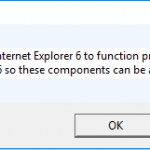

You could also take a full disk backup with SQL Server down.Ĭheck for mappings between the SQL Server Login and one or more databases of our SQL Server Instanceįor each database mapping found, drop corresponding database user following steps described above. (Optional) If your SQL Server instance is hosted on a virtual machine, shutdown this machine, take a snapshot and restart. Let’s try to drop this login directly by running following statement:Īs we’ve seen for database users, dropping a SQL Server Login is not always a simple task. However, if we were in front of another user than, we should follow the exact same path as we did for user in database. We’ll review this in a moment and it won’t be a problem anymore. It’s a consequence of the fact that login owns. As we need to remove any reference in any mapped database, it’s time to consider the second one.Īctually, this mapping is done to database user, which is a reserved user that we can’t drop. We already managed to drop the most difficult one, in database. In our test situation, there were two database mappings defined for login. List all database roles owned by database user U and set a new owner for them.ĭropping all database users mapped to a login List all database schemas owned by database user U and set a new owner for them. Now we can store database permissions assigned by database user U into a temporary table.
Unable to sign into microsoft money 2005 code#
If an error occurred in step 1, review code then retry step 1 Take appropriate action between following ones: It’s that there is an order to respect if we want to automate the removal of a database user U:Ĭheck for references to database user U inside procedure objects. However, there is one more thing we can conclude. is set as executor for a procedure called:įinally, we had to review existing code so that we can’t find any reference to in the body of procedural objects (stored procedures, functions, etc).On a SQL Server 2012+ instances, login is the owner of a Server Role called. login granted CONNECT SQL permission to login.login is granted CONNECT SQL permission and can grant it to any SQL Server Login.There is also another login called that is mapped to in database. This mapping is done between this login a database user called in and in. In this section, we will present the situation to which we will refer in this article where we want to drop a SQL Server login called, that is mapped to two SQL Server databases, and. Once this is done, we’ll consider the removal of the login itself and also enlist the actions that have to be done. Once we managed to perform this task, we’ll review the steps we followed and consider their appropriate sequencing. We’ll first start trying to remove database user from database. Our objective will be to drop a SQL Server Login and its corresponding databases users, both called. In the following sections, we will first define and build a test case. This test and its conclusions will provide us relevant information that we can use if we are willing to automate this task or at least some parts of it. In this article, we’ll try to drop a SQL Server Login and all its dependencies using T-SQL statements.

If you used T-SQL, you’ll get following error message: It that case, you’ll get following screens in SSMS: For instance, if the login you want to drop is set as a database owner for one or more databases. Anyway, if you came to the situation you expected then it’s ok, but if not, it’s mandatory to carefully consider the advice in that warning that says we need to transfer ownership of schemas to another user.īut there are also cases where these steps will fail. We can come to that situation too when we restored one or more databases from a SQL Server instance (source server) to another server (destination server) where all logins mapped to these databases are not created on a destination server, or they are created but with different SID.

If there were mappings between this login and one or more database users (one per database), these users are still there. But, as SSMS stated, you may have left a few things inside your databases.

No matter the path you followed, if everything went OK, your login is now dropped.


 0 kommentar(er)
0 kommentar(er)
